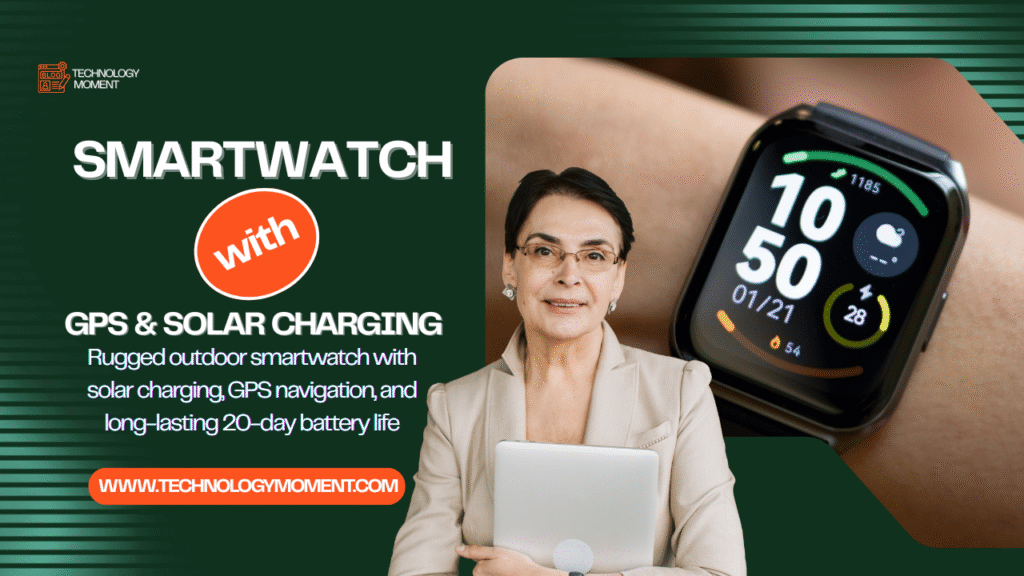Welcome to Technology Moment, your go-to destination for the latest insights and practical tips in the ever-evolving world of tech. Here, we simplify complex topics and bring you expert advice to navigate the digital age with confidence.
In today’s blog, we dive into an essential topic for every iPhone user: How to protect your device from Malware for iPhone Free. With our smartphones holding so much of our personal and professional lives, keeping them secure is more important than ever. Whether you’re concerned about phishing scams, malicious apps, or just want to understand how to stay one step ahead of hackers, this article will guide you through everything you need to know.
Stay tuned as we explore practical, free strategies to keep your iPhone safe and secure!
Whether it’s personal photos, financial information, or social media accounts, the data stored on our iPhones is valuable—not just to us but also to cybercriminals. As technology advances, so do the tactics of hackers and malware creators. Even though iPhones are considered among the most secure devices, they are not immune to potential threats. This makes understanding and prioritizing iPhone security essential for every user.
Imagine your iPhone as a house filled with precious belongings. You wouldn’t leave the doors unlocked, right? Similarly, safeguarding your iPhone against malware is like putting strong locks on your digital doors. It’s about being proactive rather than reactive.
Common Myths About Malware on iPhones
A widespread myth is that iPhones are completely immune to malware due to Apple’s strict app vetting process and closed ecosystem. While it’s true that iPhones are harder to exploit than some other devices, no system is foolproof. Hackers are constantly developing new ways to bypass security measures, especially through phishing, malicious websites, and compromised apps.
Many users believe that simply avoiding downloads from untrusted sources is enough. While this is a good first step, malware can still find its way in through sneaky tactics like fake Wi-Fi networks, phishing emails, or outdated software vulnerabilities. These misconceptions can lead to a false sense of security, leaving many iPhone users unprepared for potential threats.
Setting the Tone for the Article
The introduction sets the stage for the rest of the article by emphasizing the balance between the iPhone’s robust security features and the ever-evolving nature of cyber threats. It reassures readers that while the risks are real, there are practical and accessible ways to keep their devices secure—many of which are free.
The goal here is to make the reader feel empowered. By adopting a conversational tone, the introduction draws readers in and encourages them to explore the detailed steps and tips provided later in the article. It promises not just information but actionable insights, ensuring that readers feel confident about protecting their iPhones from malware.
Table of Contents
Understanding Malware for iPhone Free
Malware, short for “malicious software,” refers to programs or code specifically designed to harm, exploit, or gain unauthorized access to devices, networks, or systems. When it comes to iPhones, the perception of their immunity to malware is a common belief—but it’s not entirely accurate. While iPhones are generally more secure than other devices, they are not completely invulnerable. Let’s dive deeper into this topic to clarify misconceptions and understand how malware can affect iPhones.
What is Malware?
Malware comes in various forms, each designed to achieve a specific goal. Common types include:
- Spyware: Software that secretly collects user information.
- Ransomware: Programs that lock you out of your device or data until you pay a ransom.
- Trojan Horses: Malware disguised as legitimate software to trick users into installing it.
- Adware: Unwanted programs that bombard you with intrusive ads.
While these threats are more common on open platforms like Windows or Android, they can also target iOS devices under certain conditions.
Can iPhones Really Get Malware?
The notion that iPhones are entirely immune to malware comes from Apple’s robust security measures. iOS is a closed operating system, which means Apple strictly controls what can and cannot run on its devices. Apps are only available through the App Store, where they undergo rigorous security checks.
However, iPhones are not invincible. Here are some scenarios where they can still be exposed to malware:
- Jailbreaking: When users remove Apple’s built-in restrictions to customize their devices, they inadvertently weaken the iPhone’s security framework. This opens the door for unauthorized apps and malicious software.
- Phishing Attacks: Malware can infiltrate your iPhone through deceptive emails, messages, or websites designed to trick you into sharing sensitive information or downloading harmful files.
- Malicious Websites and Ads: While Safari and other browsers offer some protection, visiting compromised websites or interacting with infected ads can expose your device to threats.
How Malware Targets iPhones
Despite the secure architecture of iOS, attackers have found creative ways to target iPhones. Below are the most common methods:
- Fake Apps: Some apps bypass App Store security checks or exploit zero-day vulnerabilities (unknown security gaps) to carry malicious code. Once downloaded, they can steal data or control certain device functions.
- Phishing Links: A user may receive an email or text message with a link that, when clicked, installs malware or redirects them to a fake website designed to steal login credentials.
- Compromised Wi-Fi Networks: Connecting to unsecured or fake Wi-Fi networks can allow hackers to inject malware into your device or intercept sensitive information.
- Exploiting Software Vulnerabilities: If your iPhone runs outdated software, it becomes more vulnerable to malware that exploits known security gaps.
Why iPhones Are Generally Secure
To better appreciate the risks, it’s essential to acknowledge why iPhones are considered more secure than many other devices:
- App Store Policies: Apple screens all apps for malicious behavior, reducing the likelihood of malware-infected apps entering the ecosystem.
- Sandboxing: iOS apps run in isolated environments, meaning they cannot access other apps’ data or the system unless explicitly granted permission.
- Regular Updates: Apple frequently releases security patches to address vulnerabilities, ensuring that devices remain protected against emerging threats.
- End-to-End Encryption: Messages, FaceTime calls, and data are encrypted, adding an extra layer of protection.
How to Identify Malware on Your iPhone
While iPhones are known for their security features, they are not entirely immune to malware. Recognizing the signs of a potential infection can help you take immediate action and protect your device. Here’s a detailed breakdown of how to identify malware on your iPhone:

Signs Your iPhone Might Be Infected
- Pop-ups and Unusual Ads
- One of the first signs of malware infection on any device, including iPhones, is the appearance of persistent pop-ups or unusual ads. While some ads are typical, if they start appearing even when you’re not actively using any app or browsing, it’s a red flag. Malware often uses these intrusive ads to generate revenue or trick users into clicking on malicious links.
- Unexpected App Behavior
- If you notice that your apps are acting strangely—crashing more often, becoming unresponsive, or using excessive data—it could be due to malware. Some malware apps run in the background, consuming data or battery, even when you’re not using the device actively.
- Battery Draining Faster Than Normal
- Malware can silently run in the background, consuming resources like your battery and internet data. If your iPhone’s battery drains much faster than usual, especially when you’re not using it intensively, malware could be a possible cause. It’s important to monitor your battery usage in the settings to spot any unusual activity.
- Unexplained Data Usage
- Increased data usage is another indicator that something might be running in the background, such as malware. If you notice that your data usage is higher than usual, even when you haven’t been using the internet extensively, malware could be using your internet connection to send data to an attacker.
- Overheating
- Your iPhone might start to feel unusually warm even when you’re not using it heavily. This could be due to malware using up processing power in the background, causing your phone to overheat. If you’re noticing your phone gets hot without running any high-performance apps, malware could be the culprit.
Tools to Detect Malware
If you suspect that your iPhone has been infected with malware, there are a few tools and techniques that can help you confirm it:
- Built-in iOS Features
- iOS is designed with several built-in security features to help identify malware and other threats. These features work together to protect you, but you can also use them to help spot issues:
- Settings > Battery: This section allows you to view battery usage by app. If any app is using a lot of power without your knowledge, it could indicate something suspicious.
- Settings > Privacy: This section shows what data your apps have access to, such as your location, camera, and microphone. If an app has access to unnecessary information, it could be a sign of malware.
- Settings > Cellular: This shows how much data each app is using. If you see a spike in data usage from unknown apps, it’s worth investigating further.
- iOS is designed with several built-in security features to help identify malware and other threats. These features work together to protect you, but you can also use them to help spot issues:
- Security Apps
- While Apple does not traditionally allow third-party antivirus apps on iOS, there are some apps available on the App Store designed to help detect suspicious behavior on your device. Some of these apps can check for phishing attempts, track your browsing history for suspicious links, or help you monitor system performance for any unusual activity. Although these apps might not catch every instance of malware, they can provide extra protection and peace of mind.
- Safari and Other Browsing Data
- Often, malware is introduced to iPhones through phishing websites or malicious links that users accidentally click on. If you find that your iPhone is constantly redirecting you to suspicious websites, or if you notice unfamiliar bookmarks in Safari, it’s a good idea to clear your browsing history and reset your settings.
- Resetting Your iPhone
- If you’re unsure whether your iPhone is infected with malware, one of the most effective ways to detect and eliminate any harmful software is by doing a factory reset. While this step will delete all the content on your iPhone, it can also remove any malware that might be lurking. After performing a reset, ensure that you reinstall only apps from trusted sources, like the App Store, to avoid reintroducing malware.
Free Ways to Protect Your iPhone from Malware
Keeping your iPhone secure from malware doesn’t have to cost a fortune. In fact, there are several free and effective ways to safeguard your device. Here’s a detailed breakdown of these methods to ensure your iPhone remains malware-free.
1. Using Built-in iOS Security Features
Apple’s ecosystem is known for its robust security, and iPhones come equipped with several built-in features that act as your first line of defense.
- Automatic Software Updates
Apple regularly releases updates to address vulnerabilities and improve security. Enabling automatic updates ensures that your iPhone has the latest patches and features. To do this:- Go to Settings > General > Software Update.
- Toggle on Automatic Updates.
- App Store Protections
Apple thoroughly reviews every app before it’s made available in the App Store. By only downloading apps from the App Store, you significantly reduce the risk of installing malware-infected software. - Safari’s Fraudulent Website Warning
The built-in Safari browser alerts you if you’re about to visit a suspicious or unsafe website. Make sure this feature is enabled by going to:- Settings > Safari > Fraudulent Website Warning.
- Find My iPhone and Activation Lock
These features protect your device if it’s lost or stolen, making it harder for attackers to tamper with your device or data.
2. Safe Browsing Habits
While built-in features are excellent, your behavior plays a critical role in preventing malware infections.
- Be Cautious with Links and Attachments
Avoid clicking on links in unsolicited emails, messages, or pop-ups. Cybercriminals often use phishing schemes to lure users into downloading malicious files or revealing sensitive information. - Stick to Trusted Websites
When browsing the web, make sure to use HTTPS-enabled websites. These sites are more secure and less likely to host malicious content. - Avoid Public Wi-Fi
Public Wi-Fi networks are hotspots for cybercriminals. If you must use one, avoid entering sensitive information, and consider using a free VPN app to encrypt your connection.
3. Recommended Free Security Apps
Although iPhones are inherently secure, adding an extra layer of protection with free security apps can be helpful. Here are some popular options:
- Avast Security & Privacy
This app offers features like identity protection, phishing alerts, and device scanning for vulnerabilities. The free version provides sufficient tools to enhance your security. - McAfee Mobile Security
Known for its anti-theft tools, McAfee also includes Wi-Fi security checks and safe browsing features in its free package. - Lookout Mobile Security
Lookout combines anti-malware tools with device tracking and backup features, ensuring your device remains secure.
Before downloading any security app, ensure it is well-reviewed and available on the official App Store to avoid downloading fake or malicious apps.
4. Be Smart About App Permissions
Malware often exploits unnecessary permissions granted to apps. You can review and manage permissions by:
- Going to Settings > Privacy & Security.
- Checking which apps have access to your camera, location, microphone, and other sensitive features.
- Disabling permissions that seem unnecessary for the app’s function.
For example, a calculator app doesn’t need access to your location or contacts.
5. Enable Two-Factor Authentication (2FA)
Two-factor authentication adds an additional security layer to your Apple ID and prevents unauthorized access to your device. To enable it:
- Proceed to [Your Name] > Settings > Password & Security.
- Select Two-Factor Authentication and follow the prompts.
This ensures even if someone gains access to your password, they can’t log in without the verification code sent to your trusted device.
6. Avoid Jailbreaking Your iPhone
Jailbreaking might give you more customization options, but it also removes Apple’s built-in security protections. This makes your device more susceptible to malware and other security threats. Sticking with the standard iOS ensures you benefit from Apple’s tight security measures.
7. Regularly Restart Your Device
It might sound simple, but restarting your iPhone occasionally can help eliminate minor malware threats. Certain types of malware are designed to run in the background, and a reboot can disrupt these processes.
8. Back Up Your Data
Creating regular backups ensures that even if malware compromises your device, you can restore your data quickly and safely. To backup your smartphone, use iTunes or iCloud. To back up using iCloud:
- Proceed to [Your Name] > Settings > iCloud > iCloud Backup.
- Tap Back Up Now.
Advanced Tips for iPhone Security
Keeping your iPhone secure goes beyond basic practices like updating software and avoiding suspicious links. For those who want to take their device’s safety to the next level, these advanced tips will ensure your iPhone stays protected from potential threats.
1. Managing Permissions on Your Device
Every app on your iPhone asks for certain permissions to access features like your camera, microphone, location, or contacts. While these permissions are necessary for apps to function, granting excessive access can expose your data to risks.
- Why It Matters: If an app with malicious intent has access to your microphone or location, it could misuse that information without your knowledge.
- What You Can Do:
- Proceed to Settings > Privacy & Security to review permissions.
- Revoke access for apps that don’t need specific features.
- Enable permissions only when the app is in use (e.g., location access).
Regularly auditing these permissions ensures no app has unnecessary control over your device.
2. Regular Backups
Data loss from malware or device damage can be catastrophic, especially if you store important information on your phone. Regularly backing up your data ensures you can restore your files in case of an emergency.
- Why It Matters: Backups protect your photos, contacts, and settings from being permanently lost due to malware or hardware issues.
- What You Can Do:
- Use iCloud Backup: Navigate to Settings > [Your Name] > iCloud > iCloud Backup, and toggle it on.
- Schedule regular backups by connecting your phone to Wi-Fi.
- Alternatively, use iTunes or Finder on your computer to create local backups.
A backup strategy keeps your data safe and ensures a smooth recovery process if malware infects your phone.
3. Avoiding Jailbreaking
Jailbreaking might seem like a fun way to customize your iPhone or access apps outside the App Store, but it severely compromises your device’s security.
- Why It Matters: Jailbreaking bypasses Apple’s built-in security mechanisms, making your device vulnerable to malware and unauthorized access.
- Risks of Jailbreaking:
- Loss of warranty: Apple doesn’t support jailbroken devices.
- Increased exposure: Without Apple’s security layers, malware can easily infiltrate.
- System instability: Devices that have been jailbroken frequently crash and malfunction.
- What You Can Do: Stick to the App Store for apps and avoid modifying your device’s system software.
By avoiding jailbreaking, you maintain the integrity of Apple’s robust security framework.
4. Use Two-Factor Authentication (2FA)
Two-factor authentication adds an extra layer of security to your Apple ID, ensuring that even if someone gets your password, they can’t access your account without a second verification step.
- Why It Matters: 2FA protects your Apple ID and all associated services, such as iCloud, App Store, and Find My iPhone.
- What You Can Do:
- Go to Settings > [Your Name] > Password & Security > Two-Factor Authentication, and enable it.
- Use trusted devices or phone numbers for verification codes.
5. Enable “Find My iPhone”
This built-in feature not only helps you locate a lost device but also offers security features like remotely locking or erasing your iPhone in case it gets stolen or infected.
- Why It Matters: If your phone is compromised or stolen, you can prevent further damage by erasing its data remotely.
- What You Can Do:
- Proceed to [Your Name] > Settings > Find My > Select on “Find My iPhone.“
- Enable Send Last Location to track your device even if the battery is low.
Being able to control your phone remotely adds an invaluable layer of security.
6. Avoid Public Wi-Fi Networks
Public Wi-Fi networks are notorious for being insecure and exposing users to potential hacking or malware attacks.
- Why It Matters: Hackers can intercept data sent over public Wi-Fi, including passwords and personal information.
- What You Can Do:
- Steer clear of critical activities like internet banking on public networks.
- Use a Virtual Private Network (VPN) to encrypt your data when you need to connect to public Wi-Fi.
Using secure networks ensures your data remains safe while browsing.
7. Monitor Security Notifications
Apple regularly sends security updates and notifications about potential threats. Staying informed can help you take immediate action when needed.
- Why It Matters: Quick responses to security alerts can prevent further damage.
- What You Can Do:
- Keep notifications enabled for Settings and App Store updates.
- Follow trusted tech sources to stay updated on emerging iPhone threats.
By staying alert, you can tackle vulnerabilities before they escalate.
What to Do If Your iPhone is Infected
If your iPhone is infected with malware, don’t panic. With the right steps, you can remove the malicious software and restore your device to a secure state. Let’s break this down into actionable steps:

Steps to Remove Malware
- Identify the Problem
- Look for signs of malware, such as:
- Unusual pop-ups or ads appearing frequently.
- Apps crashing unexpectedly.
- Rapid battery drain or overheating.
These symptoms suggest that your device may have been compromised.
- Look for signs of malware, such as:
- Delete Suspicious Apps
- Review the apps on your iPhone:
- Go to Settings > General > iPhone Storage to see all installed apps.
- Identify apps you didn’t install or rarely use, especially if they appeared recently.
- Uninstall any app that seems suspicious or unnecessary by holding down its icon and selecting Delete App.
- Review the apps on your iPhone:
- Update Your iOS
- Malware often exploits vulnerabilities in outdated software. Update your iPhone to the latest version:
- Go to Settings > General > Software Update.
- Download and install the latest iOS version, as updates often contain patches for security flaws.
- Malware often exploits vulnerabilities in outdated software. Update your iPhone to the latest version:
- Clear Your Browser Data
- If pop-ups or redirects occur while browsing, clear your browser’s cache and history:
- For Safari:
Navigate to Settings > Safari > Delete Website Data and History. - For other browsers, look for similar options under their settings.
- For Safari:
- If pop-ups or redirects occur while browsing, clear your browser’s cache and history:
- Restart Your iPhone in Safe Mode
- Safe Mode disables third-party apps temporarily, letting you troubleshoot:
- Restart your iPhone by holding the power button and swiping to power off.
- Holding down the Volume Down button, turn it back on until the Apple logo shows.
- Check if the issues persist in Safe Mode. If not, it’s likely caused by a malicious app.
- Safe Mode disables third-party apps temporarily, letting you troubleshoot:
- Reset Your Device
- As a last resort, you can reset your iPhone to its factory settings:
- Select Settings > General > Reset > Delete All Settings and Content.
- Ensure you have a backup of your data before proceeding, as this will delete everything on your device.
- After resetting, restore only essential data from a clean backup (avoid backups made after the infection).
- As a last resort, you can reset your iPhone to its factory settings:
When to Seek Professional Help
- Persistent Issues After Resetting
- If the problem persists even after resetting, the malware might have deeply infected the device, or there could be hardware issues.
- Unusual Charges or Unauthorized Transactions
- Malware can sometimes lead to stolen credentials or unauthorized purchases. If you notice suspicious activity:
- Contact Apple Support immediately.
- Report the issue to your bank or credit card company if financial data is compromised.
- Malware can sometimes lead to stolen credentials or unauthorized purchases. If you notice suspicious activity:
- Reach Out to Apple Support
- Apple has dedicated support to assist with malware removal:
- For professional assistance, utilize the Apple Support App or stop by an Apple Store.
- Apple has dedicated support to assist with malware removal:
Tips for a Clean Recovery
- Avoid restoring your data from a backup created when the device was infected.
- Change your Apple ID password and other critical account passwords.
- Enable Two-Factor Authentication (2FA) for added security.
By following these steps, you can regain control of your iPhone and secure it against future threats.
The Future of iPhone Security
As technology evolves, so do the threats targeting our digital devices, including iPhones. The future of iPhone security is poised to be an ongoing battle between innovative safeguards and increasingly sophisticated malware. Apple remains at the forefront of mobile security, constantly enhancing its features to keep users protected. Let’s explore two key aspects of the future of iPhone security: Apple’s commitment to privacy and staying ahead of emerging threats.
Apple’s Commitment to Privacy
Apple has long been recognized for prioritizing user privacy and security. This commitment will continue to drive the development of cutting-edge features aimed at protecting iPhone users from malicious attacks.
- Enhanced Device Encryption
Apple is likely to continue improving encryption algorithms to ensure that user data remains virtually unbreakable, even if a device falls into the wrong hands. - AI-Powered Threat Detection
The integration of artificial intelligence into iOS could allow iPhones to detect and neutralize threats in real-time. AI algorithms might identify unusual behavior, block malicious links, and prevent unauthorized access more effectively. - Stronger App Store Regulations
Apple already maintains strict guidelines for apps published on the App Store. Moving forward, these regulations will likely become even more rigorous, reducing the risk of malware-infected apps reaching users. - On-Device Privacy Features
The introduction of features like App Tracking Transparency demonstrates Apple’s focus on keeping user data private. Future updates might include expanded control over permissions, giving users more power to decide how their data is accessed.
Staying Ahead of Emerging Threats
As a result, Apple will need to remain proactive in anticipating and addressing these threats. Here’s how this might shape the future:
- Zero-Day Vulnerability Management
Apple will likely invest more in identifying and patching zero-day vulnerabilities before attackers can exploit them. Swift updates and security patches will remain crucial in this regard. - Improved Network Security
Features like private relay and VPN enhancements could be expanded to provide even greater protection during online activities, shielding users from phishing attacks and unsecured networks. - Integration of Biometric Security
Apple may advance biometric technologies like Face ID and Touch ID to ensure that only authorized users can access their devices. Enhanced facial recognition and multi-factor authentication could become standard. - Collaboration with Security Experts
To stay ahead of hackers, Apple might work more closely with cybersecurity professionals, ethical hackers, and governments to identify potential threats and implement preemptive solutions.
Preparing Users for the Future
Another key component of future iPhone security lies in user education. Apple will likely focus on creating more intuitive tools and prompts that help users recognize and avoid risks. For example:
- Security Awareness Campaigns: Apple could launch initiatives to educate users about phishing, social engineering, and safe online practices.
- Real-Time Alerts: iPhones might notify users immediately when suspicious activity is detected, such as an untrusted network or potential malware.
Conclusion: A Detailed Explanation
The conclusion of the article wraps up the discussion on iPhone security by summarizing the key points while providing a final call to action for the reader. Here’s an expanded breakdown of the section:
Recap of Best Practices for iPhone Security
The conclusion begins by revisiting the core strategies discussed throughout the article. These include:
- Utilizing Built-in iOS Security Features: Ensuring the reader understands the importance of keeping their iPhone updated, relying on App Store-approved apps, and enabling features like Face ID, Touch ID, and two-factor authentication.
- Adopting Safe Browsing Habits: Encouraging the avoidance of suspicious links, emails, or pop-ups to reduce exposure to phishing attempts and malware traps.
- Installing Free Security Apps: Recommending trusted, free apps that can enhance the iPhone’s defenses against potential threats.
By reiterating these points, the reader is reminded that even free tools and minor adjustments to their behavior can significantly enhance their iPhone’s security.
Encouragement to Adopt Proactive Measures
The article concludes on a motivational note, emphasizing that iPhone users hold the power to keep their devices secure. It’s crucial to take a proactive stance, not just react to threats after they occur. This includes:
- Being Vigilant: Encouraging readers to stay informed about the latest threats and emerging scams targeting iPhone users.
- Regular Maintenance: Highlighting habits such as periodically reviewing app permissions, clearing unused apps, and creating regular backups of important data.
Empowering the Reader
The goal of the conclusion is to leave readers feeling empowered and capable of safeguarding their devices. It assures them that iPhones, while not entirely immune to threats, are highly secure when used responsibly. By following the advice laid out in the article, they can reduce the risk of malware and enjoy a safe and seamless mobile experience.
The conclusion wraps up with a clear call to action. Readers are encouraged to implement the tips immediately and share the knowledge with others who may benefit from it. Additionally, it may prompt them to consider upgrading their habits and adopting a security-first mindset when using their iPhones.
FAQs – Frequently Asked Questions
Can free apps truly protect my iPhone from malware?
Yes, free apps can help protect your iPhone from malware, but they should be chosen wisely. Trusted free apps like Avast Security & Privacy, McAfee Mobile Security, or Lookout offer basic features such as malware scanning, phishing protection, and breach alerts. However, these apps are often more effective when paired with iOS’s built-in security features like automatic updates and app restrictions.
The key is to rely on free apps that come from reputable developers and avoid those with poor reviews or unclear permissions, as ironically, some free apps might compromise your security.
How do I know if my iPhone has been hacked?
There are several tell-tale signs of a hacked or infected iPhone:
- Unusual pop-ups or ads: If you’re seeing frequent pop-ups, especially outside of Safari, it could indicate malware.
- Battery drains quickly: Malware often runs processes in the background, causing battery issues.
- Unrecognized apps or files: If apps you didn’t install or files you don’t recognize show up, it’s a red flag.
- Overheating: Constant overheating can also suggest malicious activity.
- Suspicious account activity: Check if your Apple ID or other accounts are showing unusual login attempts.
If you notice any of these, it’s critical to act immediately, such as running a malware scan, checking app permissions, or resetting your iPhone.
Are iPhones more secure than Android devices?
In general, iPhones are considered more secure than Android devices. Apple’s closed ecosystem ensures tighter control over software and apps. Features like App Store vetting, sandboxing of apps, and timely iOS updates contribute significantly to security.
Android, on the other hand, is more open-source and customizable, which also makes it more vulnerable to malware. However, iPhones are not immune to security threats, especially through phishing attacks, untrusted websites, or compromised networks. Staying vigilant is essential regardless of the device.
What’s the best free malware scanner for iPhones?
While iPhones don’t support traditional malware scanners due to their sandboxing design, there are apps that offer effective monitoring and alert features:
- Avast Security & Privacy: Provides protection against phishing and network vulnerabilities.
- McAfee Mobile Security: Offers device tracking, breach alerts, and safe browsing tools.
- Lookout: keeps an eye on app permissions and notifies you of any questionable activity.
Remember, Apple’s built-in protections, such as Gatekeeper and App Review, reduce the need for standalone scanners. These apps complement iOS’s robust security instead of replacing it.
How often should I update my iPhone software?
You should update your iPhone software as soon as updates are available. Apple releases updates not just for new features but also for security patches to address vulnerabilities.
To simplify this process, enable automatic updates in your settings. This ensures your device stays protected without manual intervention. Additionally, keeping apps updated is equally important, as outdated versions may have exploitable flaws.













Great article! I’ve always been cautious about downloading apps and files on my iPhone, but I never realized how many security threats are out there. The advice on malware protection is really helpful. I’ll definitely be using the recommended security tools to keep my device secure. Thanks for the tips!
This was an eye-opener! I didn’t know that iPhones could be so vulnerable to malware. The step-by-step guide on how to protect my device is super useful. I’m definitely going to follow these tips to make sure my iPhone stays secure. Keep up the great work with these informative posts!
Excellent post! I never thought about malware on iPhones until now. The security tips you’ve shared are really helpful and easy to follow. I’m definitely going to be more mindful about protecting my device from now on. Thanks for the valuable information!
Fantastic post! I always thought iPhones were immune to malware, but this really made me rethink that. The security tips are clear and actionable—definitely going to be more cautious with my apps now. Thanks for the valuable advice, I feel much more confident about keeping my device safe!
Great article! I always thought my iPhone was safe from malware, but now I realize I need to be more proactive with security. The tips are straightforward and practical—I’ll be sure to implement them right away. Thanks for sharing such important advice!